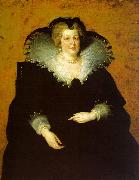Wholesale Oil Painting No Minimum |
|||||||||||
|
|
|||||||||||

|
|||||||||||
|
|
|
||||||||
Peter Paul RubensFlemish Baroque Era Painter, 1577-1640 Peter Paul Rubens (June 28, 1577 ?C May 30, 1640) was a prolific seventeenth-century Flemish Baroque painter, and a proponent of an exuberant Baroque style that emphasized movement, color, and sensuality. He is well-known for his Counter-Reformation altarpieces, portraits, landscapes, and history paintings of mythological and allegorical subjects. In addition to running a large studio in Antwerp which produced paintings popular with nobility and art collectors throughout Europe, Rubens was a classically-educated humanist scholar, art collector, and diplomat who was knighted by both Philip IV, king of Spain, and Charles I, king of England. Rubens was a prolific artist. His commissioned works were mostly religious subjects, "history" paintings, which included mythological subjects, and hunt scenes. He painted portraits, especially of friends, and self-portraits, and in later life painted several landscapes. Rubens designed tapestries and prints, as well as his own house. He also oversaw the ephemeral decorations of the Joyous Entry into Antwerp by the Cardinal-Infante Ferdinand in 1635. His drawings are mostly extremely forceful but not detailed; he also made great use of oil sketches as preparatory studies. He was one of the last major artists to make consistent use of wooden panels as a support medium, even for very large works, but he used canvas as well, especially when the work needed to be sent a long distance. For altarpieces he sometimes painted on slate to reduce reflection problems. His fondness of painting full-figured women gave rise to the terms 'Rubensian' or 'Rubenesque' for plus-sized women. The term 'Rubensiaans' is also commonly used in Dutch to denote such women. |
||||||||
|
|
||||||||
Portrait of Marie de Medici
Portrait of Marie de Medici Painting ID:: 3673 |
1622
Museo del Prado, Madrid 1622 Museo del Prado, Madrid |
|||||||
|
|
||||||||
|
Frans Pourbus Flemish Northern Renaissance Painter, ca.1545-1581 Painter, son of Pieter Pourbus. His work consists mainly of portraits and religious subjects, although he also executed a number of landscapes and history paintings. He worked mostly for the wealthy patrician class, and his work was instrumental in spreading the Romanism of Frans Floris (his teacher) throughout the Netherlands. It is probable that Frans Pourbus's earliest teaching was with his father in Bruges, but by 1564 he is recorded as working in the Antwerp studio of Floris. According to van Mander, Frans Pourbus and his fellow student Crispijn van den Broeck together completed an altarpiece by Floris after the latter's death in 1570. In 1566 Frans Pourbus married Susanna, a daughter of Cornelis Floris and niece of his master, and in 1569/70 he became a master in the Antwerp Guild of St Luke, though he retained his citizenship of Bruges. Gortzius Geldorp was his pupil in Antwerp in 1570. For Ghent Cathedral Frans painted Christ among the Doctors (the Viglius Altarpiece, 1571; in situ), which includes life-size portraits of Emperor Charles V, his son Philip, their secretary Viglius ab Aytta (d 1577), Jansenius, first Bishop of Ghent (d 1576), and the Duke of Alba. A decade later Pourbus executed the portrait of the Hoefnagel Family (c. 1581; Brussels, Mus. A. Anc.), shown grouped around a harpsichord playing musical instruments, in which the artist included a self-portrait (playing a lute) at the upper left. The picture was acquired in 1696 by Constantijn Huygens the younger from a cousin, a Hoefnagel descendant, in exchange for a horse; the young girl of 15 or 16 with a parrot in her hand was Huygens's grandmother. An inventory drawn up after Frans Pourbus death lists 20 portraits by him, many from the circle of the Duke of Anjou. Portrait of Marie de Medici between 1600(1600) and 1642(1642) Medium Oil on canvas Dimensions 285 x 218 cm (112.2 x 85.8 in) cyf |
||||||||
|
|
||||||||
|
Prev Next
|
||||||||
|
|
||||||||
|
Related Paintings to Frans Pourbus :. |
||||||||
|
|
||||||||
|
CONTACT US |

